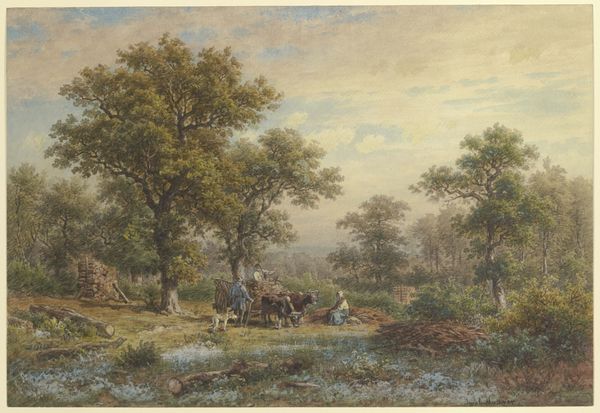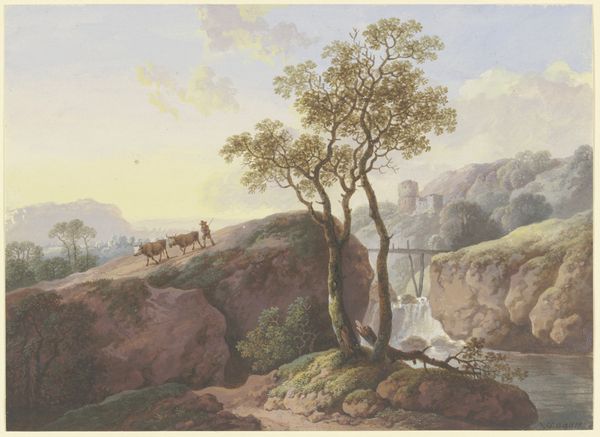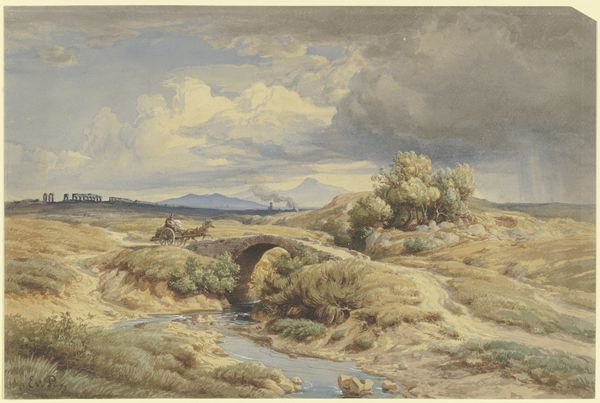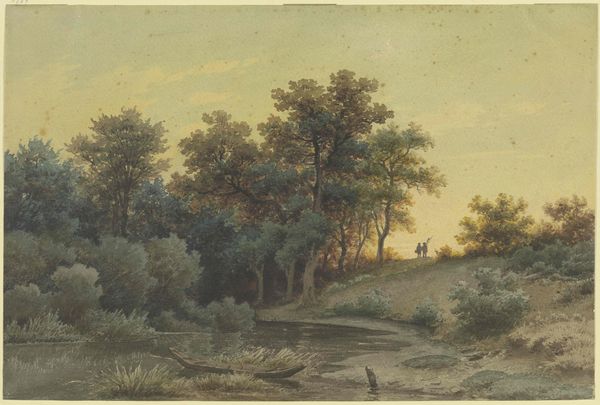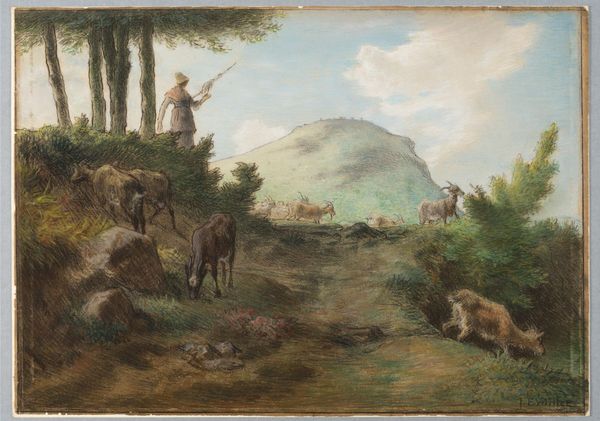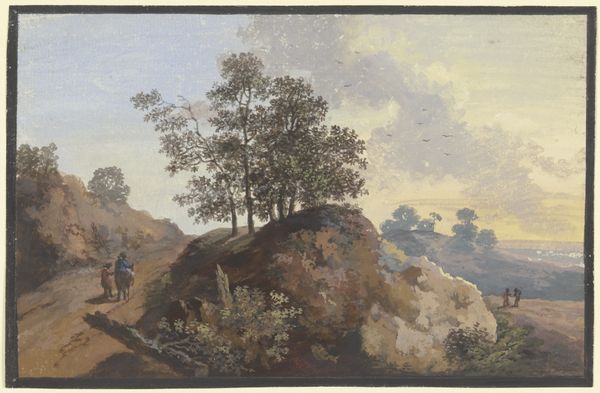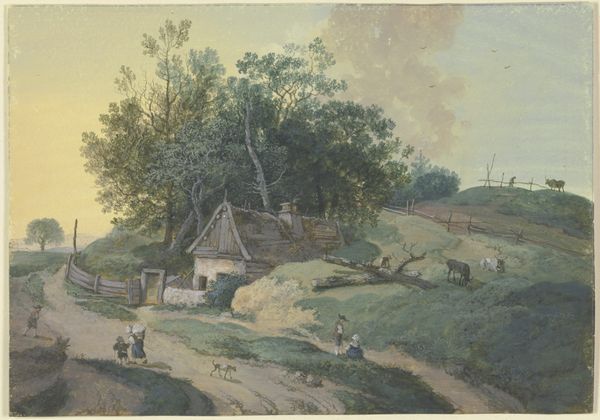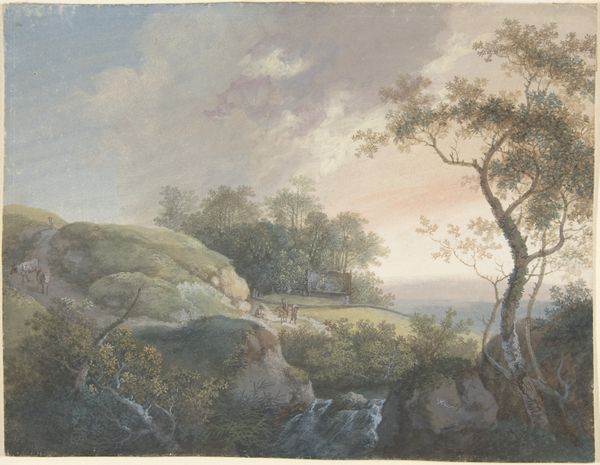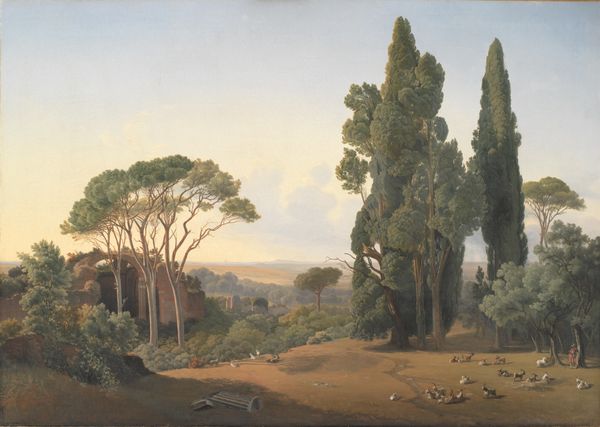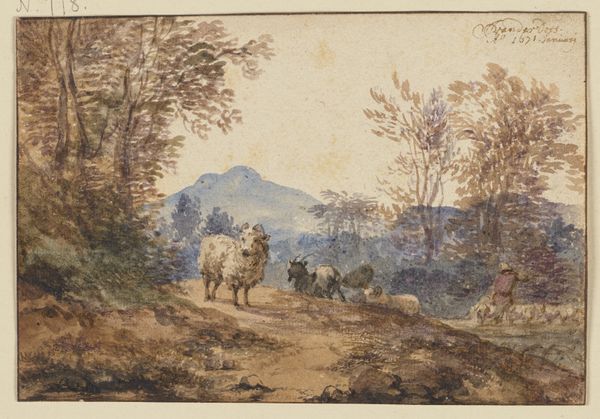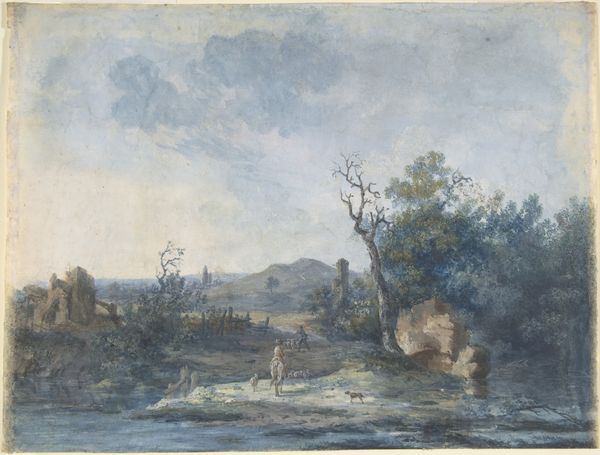
Waldpartie und Ruine mit einem Bogen an einem Weg mit Hirten und Vieh 1764
0:00
0:00
drawing, coloured-pencil, tempera, paper, watercolor
#
drawing
#
coloured-pencil
#
tempera
#
landscape
#
paper
#
watercolor
#
coloured pencil
#
15_18th-century
#
rococo
Copyright: Public Domain
Curator: Here we have Johann Georg Wagner's "Woodland Scene and Ruin with an Arch on a Road with Shepherds and Cattle," created around 1764. It's a lovely example of landscape art from the Rococo period. Editor: It feels so dreamlike, almost like looking at a faded memory. The hazy light and delicate colours create a strong sense of longing. Curator: The piece employs watercolour, tempera and coloured pencil on paper, allowing for those delicate gradations of light and shadow that you mention. Notice how Wagner balances the darker, denser foliage on the left with the open, illuminated space to the right. Editor: And how that ruined arch acts as a visual bridge between those two contrasting spaces! I see that tension echoed in broader historical themes. The idyllic rural scene is juxtaposed with the remnants of past civilisations. This visual language romanticizes the past but is it critiquing the present? Is it maybe commenting on the transience of power? Curator: An interesting interpretation. One could argue that the ruin offers structural complexity, acting almost as a framing device, and its subdued presence harmonizes rather than contrasts. This harmony is echoed in the balance and careful composition across the artwork's structure. Editor: I disagree, it evokes nostalgia and perhaps a silent critique of modernity's impact on nature and tradition. By juxtaposing the pastoral with the remnants of human construction, it raises questions about the sustainability of societal development, the cost of progress perhaps. How do you interpret the muted colours, the delicate lines that could emphasize something powerful with so few resources. Curator: They speak of a particular Rococo aesthetic, a turn to the decorative and the delicate in reaction to the Baroque era, which is very much about celebrating form, texture, and visual intricacy through composition and materiality itself. Editor: Ultimately, regardless of our readings, I see "Woodland Scene..." as an artwork asking questions about legacy and priorities. Curator: Indeed. Whether celebrating or critiquing, Wagner prompts us to consider the visual beauty and its role in engaging with broader questions.
Comments
No comments
Be the first to comment and join the conversation on the ultimate creative platform.
